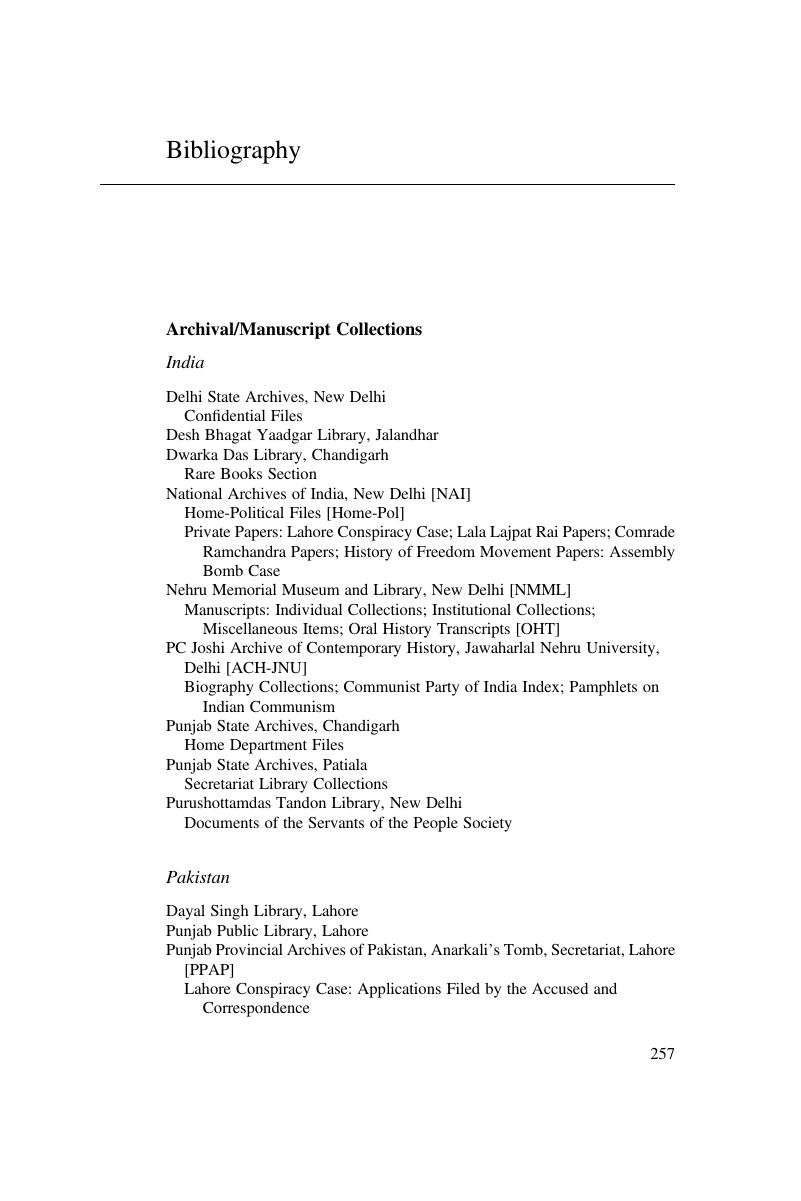Bibliography
Published online by Cambridge University Press: 21 December 2018
Summary

- Type
- Chapter
- Information
- India's Revolutionary InheritancePolitics and the Promise of Bhagat Singh, pp. 257 - 277Publisher: Cambridge University PressPrint publication year: 2019



